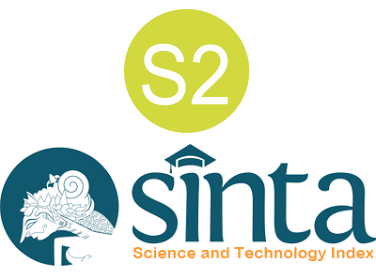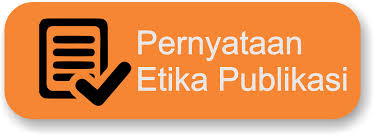Strategi Pembelajaran Hybrid (Luring-Daring) Mata Pelajaran Agama Hindu di SMA Dwijendra Denpasar Pada Era Pasca-Pandemi
DOI:
https://doi.org/10.37329/jpah.v9i3.4548Keywords:
Hybrid Learning Strategy, Hindu Religious Education, Digitalization, SMA Dwijendra Denpasar, Post-PandemicAbstract
The COVID-19 pandemic has accelerated the transformation of global education, including Hindu religious instruction, which emphasizes spiritual values and traditional practices. This shift demands adaptive learning strategies that preserve the essence of religious teachings while remaining responsive to technological advancements. This study aims to analyze the hybrid learning strategy (offline-online) implemented in Hindu religious education at SMA Dwijendra Denpasar, assess its challenges and opportunities, and evaluate the effectiveness of the applied model. A qualitative approach with a case study design was employed, using data collected through in-depth interviews, participatory observation, and document analysis. The findings reveal that the developed model successfully integrates cognitive, affective, and spiritual dimensions through interactive approaches such as virtual pilgrimages, gamification, and digital journaling. In addition to increasing students’ motivation and participation, this strategy redefines the teacher’s role into that of a spiritually grounded facilitator utilizing technology. Nevertheless, several challenges persist, including digital access inequality, limitations in translating sacred experiences into digital formats, and the complexity of managing multimodal instruction. Even so, innovations such as the Virtual Pura and digital peer mentoring systems have helped overcome some of these barriers. The study concludes that a value-based and contextually grounded hybrid learning strategy can foster authentic, adaptive, and transformative religious learning experiences in the post-pandemic era.
References
Alston, W. P. (1993). The Reliability of Sense Perception. Ithaca, NY: Cornell University Press.
Anderson, T. (Ed.). (2008). The Theory and Practice of Online Learning (2nd ed.). Athabasca, Canada: Athabasca University Press.
Asmah, A., & Rompegading, M. (2021). The Role of Higher Education in Fulfilling the right of Tri Dharma in the COVID-19 Pandemic Era. Proceedings of the European Alliance for Innovation, 4(11), 1-10.
Bashir, A., Bashir, S., Rana, K., Lambert, P. A., & Vernallis, A. B. (2021). Post-COVID-19 Adaptations: The Shifts Towards Online Learning, Hybrid Course Delivery and the Implications for Biosciences Courses in the Higher Education Setting. Frontiers in Education, 6, Article 711619.
Bozkurt, A. (2022). Resilience, Adaptability, And Sustainability Of Higher Education: A Systematic Mapping Study On The Impact Of The Coronavirus (Covid-19) Pandemic And The Transition To The New Normal. Journal of Learning for Development, 9(1), 11-6.
Campbell, H. A. (2012). Introduction: The Rise of the Study of Digital Religion. In H. A. Campbell (Ed.), Digital Religion (pp. 1-31). London: Routledge.
Campbell, H. A., & Bellar, W. (2022). Digital Religion: The Basics. London: Routledge.
Csordas, T. J. (Ed.). (1994). Embodiment and Experience: The Existential Ground of Culture and Self (Vol. 2). Cambridge: Cambridge University Press.
Deci, E. L., & Ryan, R. M. (2012). Self-determination Theory. In P. A. M. Van Lange, A. W. Kruglanski, & E. T. Higgins (Eds.), Handbook of Theories of Social Psychology (Vol. 1, pp. 416-436). London: SAGE Publications.
Dyatmika, I. K. W., & Sudarsana, I. K. (2024). Struktur Ajaran dan Fungsi Pendidikan Agama Hindu Dalam Lontar Cempaka Wilis. Pusaka, 12(1), 51-69.
Faradita, M. N., & Rahmawati, E. (2022). Pengaruh Hybrid Learning Terhadap Hasil Belajar Siswa Pada Pembelajaran Tatap Muka Terbatas. Jurnal Ilmiah Mandala Education, 8(3), 1-10.
Febriani, N. S. (2020). Preferensi Media Sosial Generasi Milenial Pada Tingkat Pengetahuan Calon Legislatif. Nyimak: Journal of Communication, 4(1), 89-102.
Garrison, D. R., & Kanuka, H. (2004). Blended Learning: Uncovering its Transformative Potential in Higher Education. The Internet and Higher Education, 7(2), 95-105.
Garrison, D. R., & Vaughan, N. D. (2008). Blended Learning in Higher Education: Framework, Principles, and Guidelines. San Francisco, CA: Jossey-Bass.
Glazer, H. I., Romanzi, L., & Polaneczky, M. (1999). Pelvic Floor Muscle Surface Electromyography. Journal of Reproductive Medicine, 44, 779-782.
Graham, C. R. (2006). Blended Learning Systems. In C. J. Bonk & C. R. Graham (Eds.), The Handbook of Blended Learning: Global Perspectives, Local Designs (pp. 3-21). San Francisco, CA: Pfeiffer Publishing.
Grimmitt, M. (2000). Constructivist Pedagogies of Religious Education Project: Re-Thinking Knowledge, Teaching and Learning In Religious Education. In M. Grimmitt (Ed.), Pedagogies of religious education (pp. 189-207). Great Wakering, UK: McCrimmons.
Hargittai, E. (2010). Digital na(t)ives? Variation in Internet Skills and Uses Among Members of the “net Generation”. Sociological Inquiry, 80(1), 92-113.
Hick, J. (1989). The Logic of God Incarnate. Religious Studies, 25(4), 409-423.
King, U. (2009). The Search for Spirituality: Our Global Quest for Meaning and Fulfilment. Norwich: Canterbury Press.
Kinshuk, Chen, N. S., Cheng, I. L., & Chew, S. W. (2016). Evolution is Not Enough: Revolutionizing Current Learning Environments to Smart Learning Environments. International Journal of Artificial Intelligence in Education, 26(2), 561-581.
Kolb, A. Y., & Kolb, D. A. (2012). Experiential Learning Theory. In N. M. Seel (Ed.), Encyclopedia of the Sciences of Learning (pp. 1215-1219). Boston, MA: Springer.
Kolb, D. A. (2014). Experiential Learning: Experience as the Source of Learning and Development. Upper Saddle River, NJ: FT Press.
Kozma, R. B. (2003). Technology and Classroom Practices: An International Study. Journal of Research on Technology in Education, 36(1), 1-14.
Lickona, T. (2004). Character Matters: How to Help Our Children Develop Good Judgment, Integrity, and Other Essential Virtues. New York, NY: Simon & Schuster.
Love, P., & Talbot, D. (1999). Defining Spiritual Development: A Missing Consideration for Student Affairs. Journal of Student Affairs Research and Practice, 37(1), 21-35.
Mansir, F. (2020). The Problematic and Challenge of Fiqh Learning in School and Madrasah in the COVID-19 Pandemic Era. Mudarrisa: Jurnal Kajian Pendidikan Islam, 12(2), 169-184.
Martha, A. S. D., Widowati, S., & Adrian, M. (2023). Pelatihan Pemanfaatan Doratoon Bagi Guru Mgmp PAI SMA Kabupaten Bandung Untuk Pembuatan Konten Pembelajaran. Prosiding Konferensi Nasional Pengabdian Kepada Masyarakat dan Corporate Social Responsibility (PKMCSR), 6, 1-6.
Mezirow, J. (2000). Learning to Think Like an Adult. In J. Mezirow & Associates (Eds.), Learning as Transformation: Critical Perspectives on a Theory in Progress (pp. 3-33). San Francisco, CA: Jossey-Bass.
Miasari, R. S., Indar, C., Pratiwi, P., Purwoto, P., Salsabila, U. H., Amalia, U., & Romli, S. (2022). Teknologi Pendidikan Sebagai Jembatan Reformasi Pembelajaran Di Indonesia Lebih Maju. Jurnal Manajemen Pendidikan Al-Hadi, 2(1), 1-12.
Miller, J. P., & Nigh, K. (Eds.). (2017). Holistic Education and Embodied Learning. Charlotte, NC: IAP.
Mishra, P., & Koehler, M. J. (2006). Technological Pedagogical Content Knowledge: A Framework for Teacher Knowledge. Teachers College Record, 108(6), 1017-1054.
Mok, K. H., Xiong, W., Ke, G., & Cheung, J. O. (2021). Impact of COVID-19 Pandemic on International Higher Education and Student Mobility: Student Perspectives from Mainland China and Hong Kong. International Journal of Educational Research, 105, Article 101718.
Nelfi, N., Nasir, N., & Safitri, A. (2023). Bertahan di Masa Pandemi: Pendekatan Mengajar Guru di Daerah Terpencil. Edum Journal, 6(1), 138-150.
Norris, P., & Inglehart, R. (2013). Digital Divide. In R. Towse & C. Handke (Eds.), Handbook on the Digital Creative Economy (pp. 90-102). Cheltenham: Edward Elgar Publishing.
Otamas, I., Anishchenko, V. O., Ovsiankina, L., Afanasyeva, I. A., & Bieliatynskyi, A. (2022). COVID-19 Pandemic: Development of Digital Technologies that Provide Connection, Collaboration and Lifelong Learning. Journal of Learning for Development, 9(3), 455-474.
Palmer, P. J. (2022). A hidden Wholeness: The Journey Toward an Undivided life. Hoboken, NJ: John Wiley & Sons.
Palmer, T. N., Gelaro, R., Barkmeijer, J., & Buizza, R. (1998). Singular Vectors, Metrics, and Adaptive Observations. Journal of the Atmospheric Sciences, 55(4), 633-653.
Pokhrel, S., & Chhetri, R. (2021). A Literature Review on Impact of COVID-19 Pandemic on Teaching and Learning. Higher Education for the Future, 8(1), 133-141.
Pratiwi, N. K. S. (2023a). Pengembangan Kognitif pada Pendidikan Holistik dalam Pembelajaran Agama Hindu di SD No. 11 Jimbaran, Kabupaten Badung. JAPAM (Jurnal Pendidikan Agama), 3(2), 174-187.
Rawls, J. (1971). An egalitarian theory of justice. In c. Sommers & f. Sommers (eds.), philosophical ethics: An Introduction to Moral Philosophy (pp. 365-370). New York, NY: Oxford University Press.
Resubun, C. C. (2021). Respon Terhadap Pembelajaran Blended Learning di Era Pandemi COVID-19 Dengan Tingkat Stres pada Mahasiswa. Media Husada: Journal of Nursing Science, 2(3), 154-166.
Sá, M. J., & Serpa, S. (2020). The COVID-19 Pandemic As An Opportunity To Foster The Sustainable Development Of Teaching In Higher Education. Sustainability, 12(20), 8525.
Sabda, S. (2020). Paradigma Pendidikan Holistik. Pedagogi, 1(1), 29-36.
Sakillah, K., Hemafitria, H., & Rianto, H. (2020). Pengaruh Penggunaan Model Blended Learning Terhadap Hasil Belajar Siswa Kelas X TKR SMK Putra Khatulistiwa Pontianak. Jurnal Pendidikan Kewarganegaraan, 4(2), 116-125.
Sudarsana, I. K. (2018). Pengantar Pendidikan Agama Hindu. Denpasar: Universitas Hindu Negeri I Gusti Bagus Sugriwa.
Sufiani, S., & Marzuki, M. (2021). Joyful Learning: Strategi Alternatif Menuju Pembelajaran Menyenangkan. Zawiyah: Jurnal Pemikiran Islam, 7(1), 121-134.
Sujak, A., Setyawan, T., & Steviano, I. (2023). Teachers' Digital Competences: Case Studies Based On Teachers' Performance In Digital Innovative Schools. In H. A. Campbell (Ed.), Education technology in the new normal: Now and beyond (pp. 9-22). London: Routledge.
Sulhan, S. (2020). Penggunaan Model Pembelajaran Kooperatif Tipe Jigsaw Untuk Meningkatkan Hasil Belajar IPS "Keragaman Sosial, Budaya, Ekonomi, Etnis dan Agama". Journal of Education Action Research, 4(1), 52-60.
Sundulusi, C., Sutarna, S., Dimyati, A., Nurjanah, E., & Ahmad, A. (2022). Manajemen Pembelajaran Pendidikan Agama Islam di MAN 3 Karawang. JIIP: Jurnal Ilmiah Ilmu Pendidikan, 5(7), 2715-2721.
Suri, N. N. (2018). Penerapan Model Pembelajaran Kooperatif Tipe Teams Games Tournaments (TGT) untuk meningkatkan hasil belajar Ilmu Pengetahuan Sosial. Jurnal Penelitian dan Pengembangan Pendidikan, 2(3), 256-265.
Tang, K. H. D. (2022). Impacts of COVID-19 on Primary, Secondary And Tertiary Education: A Comprehensive Review And Recommendations For Educational Practices. Educational Research for Policy and Practice, 22(1), 23-61.
Tisdell, E. J. (2003). Exploring Spirituality and Culture in Adult and Higher Education. San Francisco, CA: Jossey-Bass.
Trilling, B., & Fadel, C. (2009). 21st Century Skills: Learning for Life in Our Times. San Francisco, CA: Jossey-Bass.
Vygotsky, L., & Cole, M. (2018). Lev Vygotsky: Learning and Social Constructivism. In M. Reed & R. Walker (Eds.), Learning Theories for Early Years Practice (pp. 68-73). London: SAGE Publications.
Downloads
Published
How to Cite
Issue
Section
License
Copyright (c) 2025 Gede Agus Jaya Negara

This work is licensed under a Creative Commons Attribution-ShareAlike 4.0 International License.
An author who publishes in the Jurnal Penelitian Agama Hindu agrees to the following terms:
- Author retains the copyright and grants the journal the right of first publication of the work simultaneously licensed under the Creative Commons Attribution-ShareAlike 4.0 License that allows others to share the work with an acknowledgement of the work's authorship and initial publication in this journal
- Author is able to enter into separate, additional contractual arrangements for the non-exclusive distribution of the journal's published version of the work (e.g., post it to an institutional repository or publish it in a book) with the acknowledgement of its initial publication in this journal.
- Author is permitted and encouraged to post his/her work online (e.g., in institutional repositories or on their website) prior to and during the submission process, as it can lead to productive exchanges, as well as earlier and greater citation of the published work (See The Effect of Open Access).
Read more about the Creative Commons Attribution-ShareAlike 4.0 Licence here: https://creativecommons.org/licenses/by-sa/4.0/.








